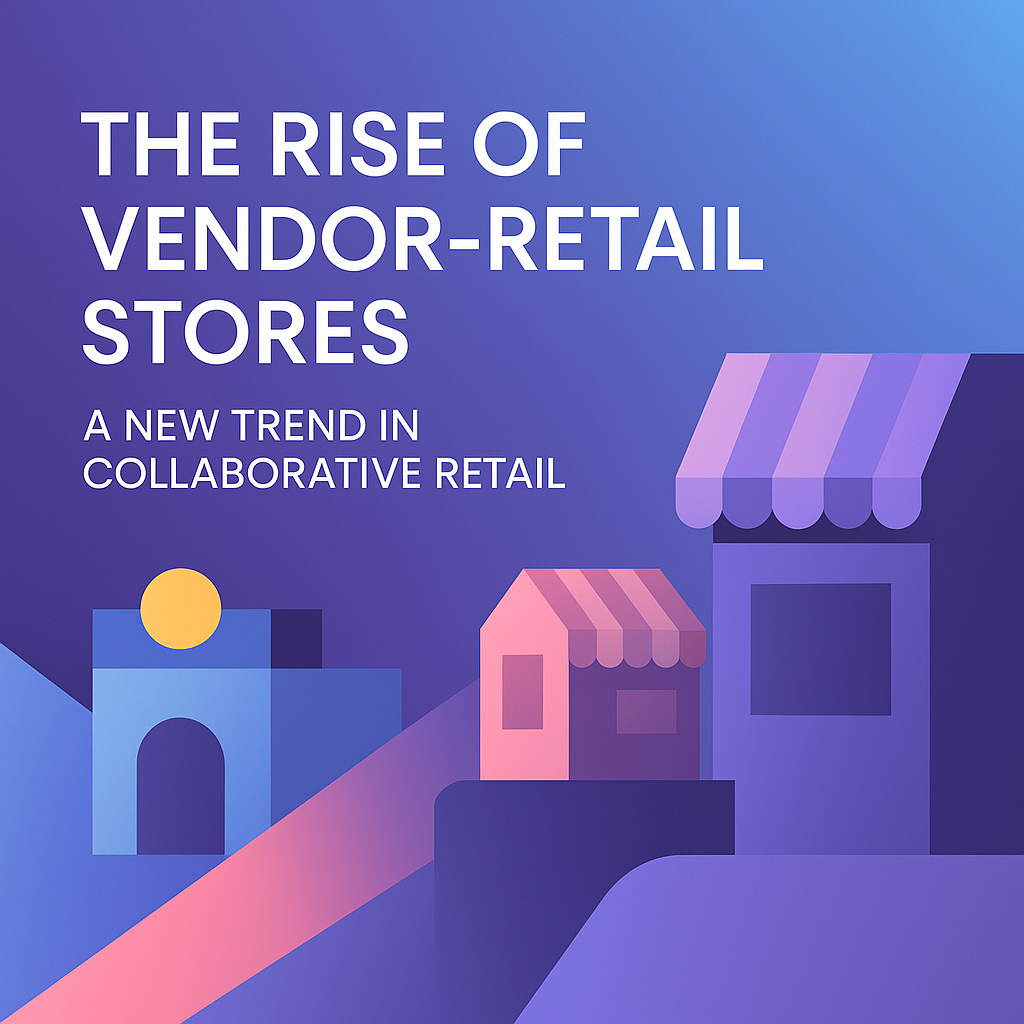In today’s retail landscape, a new trend is emerging that gives “shopping local” a big upgrade, vendor retail stores. These are large shared retail spaces where dozens or even hundreds of independent vendors each set up their own mini shop under one roof. The concept is similar to antique malls or consignment stores, but with a twist: most of the products are new items like boutique clothing, accessories, purses, home décor, and handmade crafts rather than strictly secondhand goods. This model is revolutionizing brick and mortar retail by creating a win win for small business owners and store operators alike. Let’s explore how vendor retail stores work, how they differ from traditional retail, some notable examples, and why they are growing in popularity.
What Are Vendor Retail Stores and How Do They Work?
At its core, a vendor retail store, also called a vendor mall or boutique marketplace, is a shared retail space divided into booths or display areas that individual vendors rent. Each vendor is essentially a small business owner who rents a portion of the store and makes it their own, stocking it with their products and decorating it to reflect their brand. Customers can browse hundreds of small shops all under one roof, very similar to browsing an online marketplace in real life.
The store owner provides the building, utilities, staff, and a centralized checkout. Shoppers take all their finds to a common register, where the store’s staff handles the sale and makes sure each vendor gets credit for their items sold. Vendors mark their products with a vendor ID and price, and the point of sale system tallies sales per vendor. At the end of the month, the store pays each vendor their earnings minus rent and a small commission fee. At many popular vendor marketplaces, vendors are paid monthly for their sales with the next month’s rent and a commission deducted. Vendors do not need to be present in the store to sell. Once they set up and tag their merchandise, they can set it and forget it while the staff takes care of daily sales. This allows many people to run a side business in a vendor marketplace without the expense or stress of operating a full store.
How It Differs from Traditional Retail or Consignment
Vendor malls vs. traditional retail:
In a traditional retail store, one business leases a space, buys or produces all the inventory, and hopes to sell enough products to profit. A vendor retail store flips that model. The store owner’s “inventory” is the booth space they rent out. The owner does not tie up capital in merchandise. Each vendor brings in their own inventory, which lowers risk for the store owner and creates a diverse shopping experience for customers. A vendor marketplace can offer far more variety than a single retailer could source alone.
Vendor malls vs. consignment stores:
Consignment shops also sell items from many individual owners, but there are major differences. In consignment, the store chooses and displays inventory and only pays the consignor when an item sells, taking a large commission that can range from forty percent to sixty percent. Consignors do not pay rent or have dedicated spaces. In a vendor retail store, each vendor rents a booth and curates their own mini shop. They pay rent regardless of sales, but the commission on sales is much lower and mainly covers transaction costs. Vendors have more control over merchandising and branding. Consignment is inventory centric, while the vendor booth model is space centric.
New items vs. antique malls:
The vendor store concept has existed for decades in antique malls, but the big change is that now new and artisan items are the focus. Vendor boutiques are the modern evolution of antique malls, geared toward local makers and boutique style goods. Shoppers come seeking unique items they cannot find in big box stores, such as hand poured candles, boutique apparel, or handmade gifts. The ambiance is typically more curated and boutique inspired than a flea market.
Notable Examples of Vendor Retail Stores
One of the most successful examples is Painted Tree Boutiques, which launched in 2015 and has expanded nationwide. These stores often take over large former big box retail spaces and house hundreds of vendors under one roof. Shoppers stroll through aisles of booths much like an indoor marketplace, discovering boutique fashion, decor, artisanal foods, gifts, and more. Many locations host over two hundred vendors and the company supports thousands of small businesses across all of its stores. This rapid growth reflects how popular the model has become. In recent years, Painted Tree expanded from a handful of locations to dozens more as consumer interest skyrocketed.
Another strong example is The Mercantile in Fort Worth, Texas. This vendor marketplace features more than two hundred booths offering home decor, antiques, fashion, collectibles, furniture, and more. Vendors rent their spaces, and the store takes a modest commission. The Mercantile has become a major community shopping destination and shows that the vendor retail model works not only for national chains but also for independent, locally owned marketplaces.
Across the country, many similar collectives are opening. Storefronts like The Local Collective in Tennessee allow small business owners to have a beautiful retail presence without the overhead of running their own full store. Many locations host special events, seasonal promotions, and vendor gatherings to draw shoppers and build a sense of community. Whether large or small, these vendor marketplaces have become weekend destinations where shoppers can explore a mix of local brands, handmade goods, and curated boutique products.
Benefits for Store Owners and Vendors
Lower startup costs and lower risk for store owners:
Because vendors pay rent and bring in inventory, the store owner does not need to invest heavily in merchandise. Vendor rent covers most fixed costs. This model offers faster break even potential compared to traditional retail.
Lower startup costs and overhead for vendors:
Vendors can rent a booth for a fraction of the cost of opening a standalone store. There are no long leases, utility payments, or staffing requirements. Rents may range from small shelf spaces at low monthly fees to larger booths that still cost far less than opening a traditional boutique.
Shared foot traffic and “shop small” appeal:
A store full of vendors creates a one stop shopping experience that attracts more customers. The atmosphere feels like a mix between a craft fair and a boutique market, which many shoppers love. Events and shared marketing benefit all vendors.
Passive or supplemental income:
Vendors do not need to be physically present to make sales. Store staff handles the checkout process. This allows many people to run a retail side business with minimal time commitment.
Community and collaboration:
Vendor stores often build supportive communities. Vendors share ideas, cross promote, and participate in store events. Shoppers enjoy knowing that their purchases support local small businesses.
Tech Tools Powering the Vendor Store Trend
Running a multi vendor retail space can be complex. Modern point of sale systems and management tools, such as Syncrostore, make the process far easier.
Key capabilities include:
- Centralized checkout and vendor sales tracking. Every item is tagged with a vendor ID, and the POS assigns each sale to the correct vendor automatically.
- Vendor management and self service portals. Vendors can log in to see daily sales, upload inventory, and pay rent online.
- Automated rent and commission processing. Software can generate vendor invoices, track rent payments, deduct commissions, and issue vendor payouts automatically.
- Visual store mapping and heatmaps. Owners can digitally map their store layout and identify which booth areas generate the most sales. Hot zones can justify premium booth pricing or help optimize traffic flow.
- Inventory and sales analytics. Reporting tools help identify top sellers, strong categories, or underperforming areas. Vendors and store owners can make data driven decisions.
Modern software is one of the biggest reasons vendor marketplaces have been able to scale quickly. Cloud based dashboards, automated accounting, and real time reporting allow owners to focus on growth and customer experience instead of administrative work.
Conclusion
The rise of vendor retail stores reflects a shift toward flexibility, community, and unique in person shopping experiences. Even as e commerce grows, these marketplaces offer something online shopping cannot replicate: discovery, personality, and the chance to support many small businesses in one convenient location.
For makers and entrepreneurs, this model lowers the barrier to entering physical retail. For property owners, it is an efficient and sustainable use of large retail spaces. For shoppers, it is a chance to shop small in a big way.
Vendor retail stores combine old fashioned marketplace charm with modern retail efficiency, creating a win win for everyone involved.
If you need a software to manage your vendor retail store, you can schedule a demo below:



